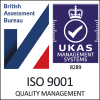Add Thermography and Help Save Energy
In recent years, the idea of renewable energy and conserving energy as much as possible has become a hot topic in Government as they aim to meet their commitment to carbon reduction and energy saving.
Now with the advent of the Green Deal and its incentives for homeowners and businesses, it is hoped that the public will become more aware of energy savings and tackle their property’s energy loss to make buildings more efficient.
With figures for the building sector currently standing at 40% of the EU’s energy requirements, it is the biggest sector with energy saving possibilities.
With all the energy saving measures now available, one of the ways to diagnose energy loss is through thermal imaging scans, which means that those trained and able to carry out this service could potentially have a lucrative career as energy saving measures get underway across the entire country.
However, many people aren’t sure if thermal imaging can be something which will compliment their current business, or indeed how it works.
The benefit of using thermal imaging for diagnostics is that it can pinpoint where energy loss or problems are without any destruction to the building in order to carry out testing.
Infrared images and reports are accurate and precise, and can provide you with a detailed visual of exactly where and how energy loss is taking place.
Thermal imaging cameras work by recording the intensity of radiation in the infrared area, which is not visible to the human eye. Cameras then covert this into a visible image and calculate the temperature of an area or surface.
Amongst other applications, when diagnosing issues with buildings, an infrared camera can identify the following:
- Visualise energy loss
- Find missing or defective insulation
- Discover air leaks
- Find moisture in the insulation, roof and walls inside and outside the building
- Detect mould
- Find leaks in flat roofs
- Find problems with hot water pipes
- Discover construction issues
- Find faults in floor heating
- Carefully watch how a building is drying
- Discover electrical problems and faults
The possibilities for thermal imaging is endless, however it’s important that those wanting to offer this as a service get proper training to fully understand what thermal images mean, to help avoid misinterpretation by the untrained eye.
To find out more information on training to become a thermographer, visit the thermal imaging training pages.
Written by Sara Thomson







